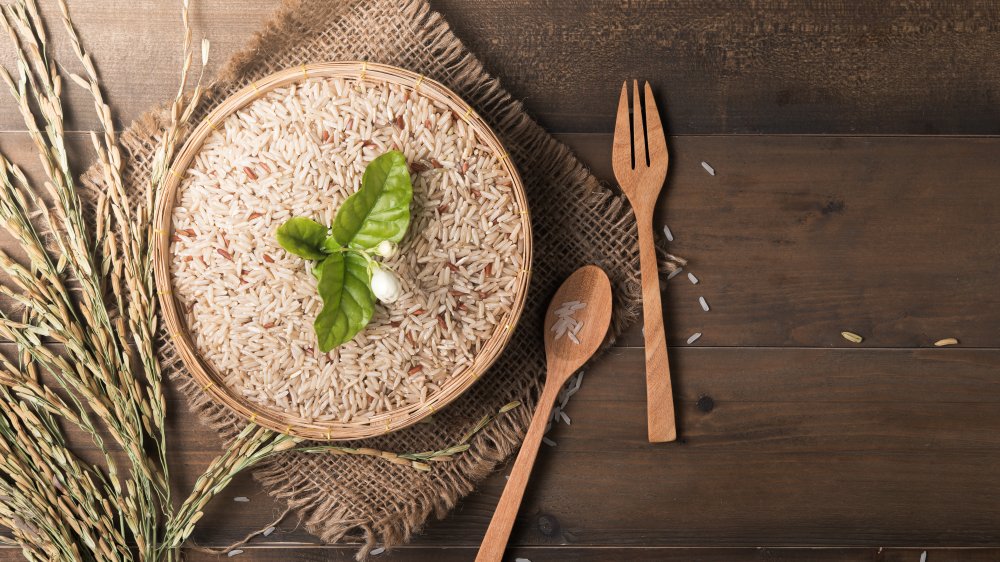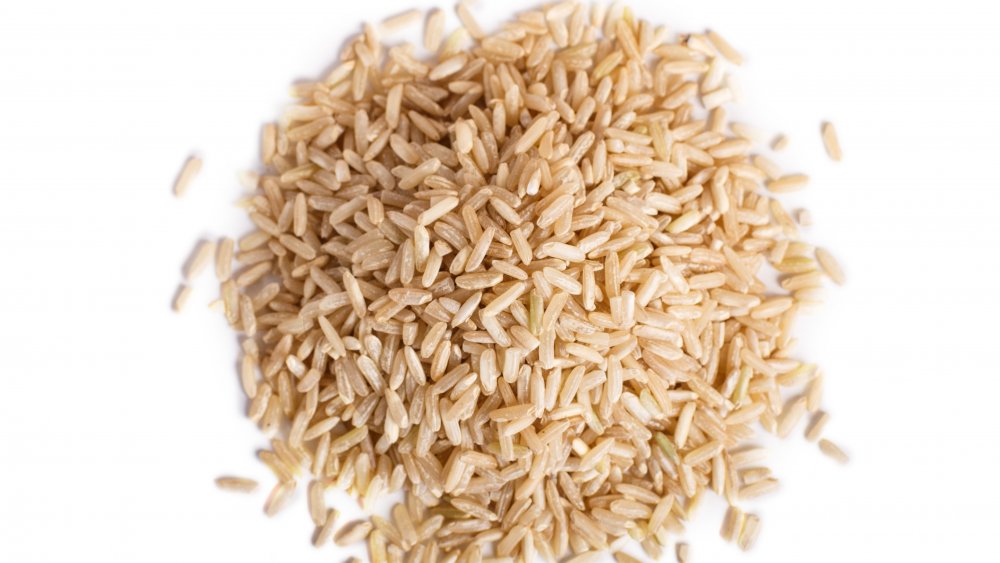The Real Difference Between White Rice And Brown Rice
There are quite a number of varieties from jasmine rice to basmati rice to sushi rice — and that's just white rice (via Food Republic). Once you get outside the realm of white rice, the possibilities really explode. The most popular type of non-white rice is probably brown rice, but what is the difference between the two?
Brown rice is a less refined version of white rice, and closer to the grain when it grows on the plant (via Healthline). Rice grows with a protective covering on the outside, and these parts of the plant (the bran and germ) are removed to create white rice. Brown rice retains these parts, and as a result, retains a good amount of nutrients as well, because the parts that are removed to make white rice are the healthiest part of the plant. This means that brown rice is considered to be a whole grain and explains why it is typically thought to be a more nutritious choice.
Because the difference between white rice and brown rice has only to do with the processing of the crop, you can have brown rice in different styles: brown basmati rice, brown sushi rice, and brown jasmine rice are all possibilities.
Other differences between the types of rice
While brown rice contains 45 percent of the recommended daily intake of manganese, white rice only has 24 percent. White rice has half of the phosphorus content as brown rice does and 3 percent of the magnesium, compared to 11 percent in brown rice. All of these nutrients are more abundant in the bran and germ of the rice
Brown rice also has a chewier texture than white rice (via Tasty Bite). It's considered to have a nuttier and earthy flavor as well. Because the milling process exposes the starchiest part of the rice, white rice is often stickier than brown rice and clumps together. This is why it's much more common to eat white rice with chopsticks and brown rice with a fork. Because brown rice is more substantial and dense than white rice, it takes longer to cook as well.

